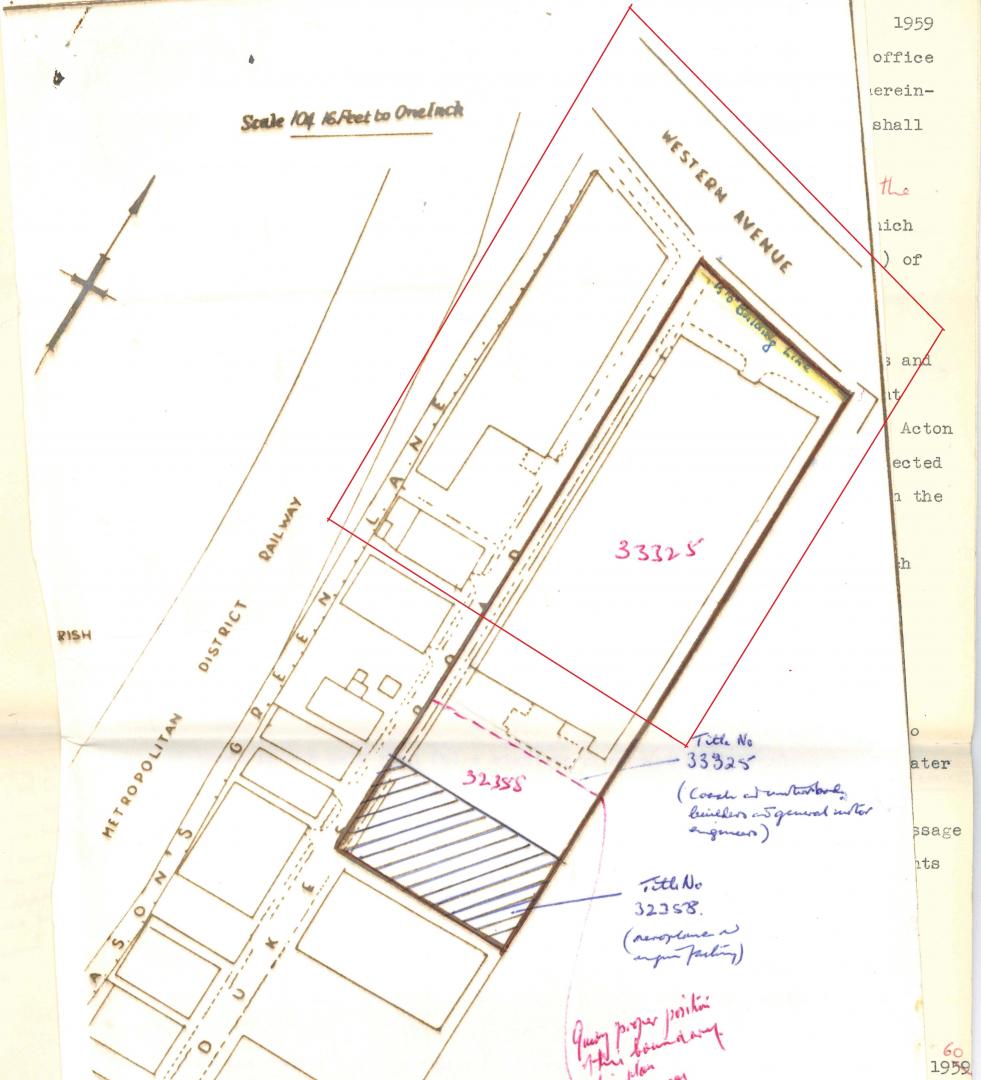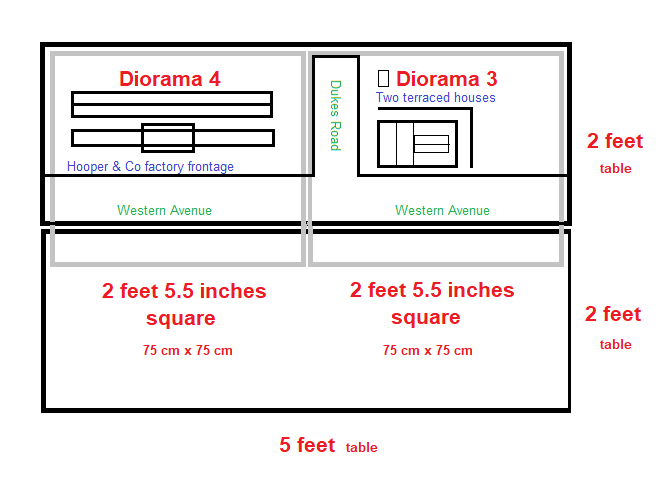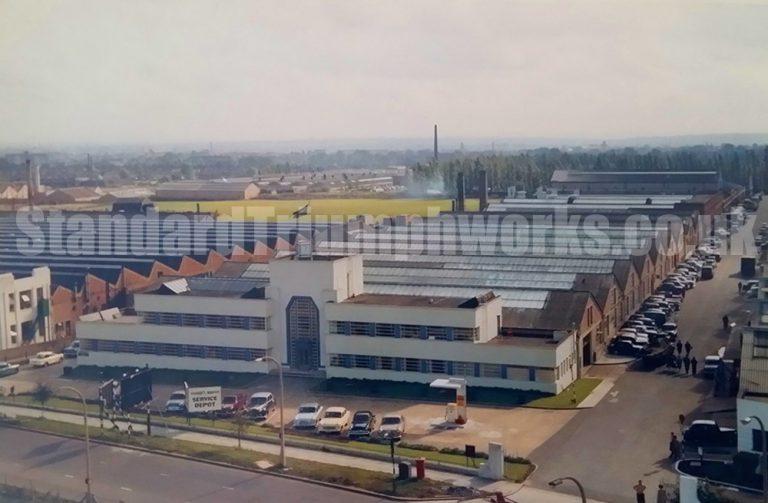-
Posts
3,487 -
Joined
-
Last visited
Content Type
Profiles
Forums
Events
Gallery
Everything posted by Anglia105E
-
The GT6 is different in many ways, Gary...... so it is not really a coupe version of the Spitfire soft top / hard top. I agree that the driving lights under the bumper were probably not correct. David
-
Do you mean the 1:24 Supermarine Spitfire aircraft ?, Lesley....... as far as I am aware, Airfix did not release a Triumph Spitfire model car in 1:24 scale..... I would like to be proved wrong, of course. David
-
It is rather surprising that they don't do a Spitfire in 1:24, neither diecast nor in kit form. David
-
Picked up two nice Vanguards 1:43 scale model cars...... one is a 1960 Vauxhall Cresta PA in two-tone green, and the second one is a 1965 Triumph Spitfire MK II in black. The Cresta is a body design that I have always liked, and it does have a great deal of American influence in it's lines. The Spitfire has a nice detachable soft top and also comes with a tonneau cover. David
-
The Ford Anglia build is entering what I would call, the final phase....... so this includes liquid chrome pen work later today, also aligning the body with the chassis, dashboard fitting and steering wheel, registration number plates, window glass all round, chassis trimming at the edges and Meguiars Carnauba wax polishing. Usually, I leave the polishing until four or five days have passed since the final coat of paint. There will be some further cutting of the rear seats at the top corners, to allow the body to fit correctly. Then there are the headlamps, tail lights and front side/indicator lamps to detail. I shall give the front air intake a coat of matt black paint, and fit a black panel behind this , to simulate where the cooling radiator would be located. Might need an exhaust tailpipe at the rear end, and maybe the bottom half of the petrol / gas tank also. David
-
Not seen one of these early Cadillacs before as a scale model, Jean-Philippe........ you have made a very nice job the build, and I like the blue paint job too. David
-
Randy..... your choice of exterior body colour for this car is excellent, and leaving the bare plastic interior colour brown seems to go well with the body colour. Very nice indeed. David
-
Many thanks for your comments, Anders...... While I do realise that the funeral procession scenario is a bit morbid, it does allow me to experiment with the ' fog ' effect and as you say, this gives the diorama setting a sinister look. That is what I was trying to achieve..... so you have responded as I was hoping ! David
-
I was not happy with the paint finish after what I thought was the final coat, so I have now applied what will be the final coat of Ford Imperial Maroon. The seats and interior floor pan are from a Revell 1968 Volkswagen Beetle and these seem to fit the Anglia, both cars being of the same size and both from the '60's. There was some cutting to do, in order to make the floor pan fit. While starting to detail the dashboard / instrument panel, I noticed this is actually a LHD dashboard, which is very surprising because the resin caster supplied this body kit from Halifax in Yorkshire, U.K. Changing it from LHD to RHD will be quite easy, and I usually have to do this for Minicraft Rolls-Royce Silver Clouds, which are also LHD setup. Once the body shell is ready, I can apply yacht varnish to the areas that will be chromed, and then apply Molotow Liquid Chrome Pen over the yacht varnish, which is a high gloss surface. David
-
Hello Donald..... Great to hear from a fellow Anglia enthusiast...... the second car I owned, following the maroon Anglia was also a 105E which was a 1959, and although it had a 997 cc engine it was heavily modified so that I could be competitive in rally driving. This Anglia was a black Hammerite paint finish ( brush painted by hand ) with green tinted windows, wheels from a Lotus Cortina MK I and four powerful spot lamps across the front ( Cibies ). The car had a Cortina 1600E gearbox, as fitted to Lotus Cortina's, and also the leather rim alloy steering wheel from the 1600E. Various mods to the engine included cylinder head from 1500 cc Cortina GT, twin Weber carbs, four branch exhaust manifold, high performance camshaft and a short exhaust system that came out at the side of the car and did not have a silencer. As you mentioned, it was wise to have some heavy object in the boot in order to keep the back end manageable . I was really proud of that Ford Anglia and I enjoyed driving it at insane speeds..... with lots of noise! Used to go to Mallory Park motor racing circuit regularly on Sundays and watch some highly tuned Anglias that were considerably faster than mine. Those were the days, eh? David
-
Yes, Shay..... I believe the Airtrax resin kit is still available from the producer in Finland, and the only reason I didn't order one from those guys was because it is a bit pricey..... something like £80.00 plus shipping if I remember correctly. The small company in Yorkshire seems to supply a similar kit, albeit not the same quality, at probably half the price. Not sure if they still produce the Anglia, but I think they do. Donor kit for the Airtrax version is the Lotus Super 7 by Tamiya, which was mainly for the wheels. David
-
Well I hope so too, JC...... go for it Beemax !!! Sometimes a company will come up with something surprising, so never say never. David
-
I agree totally, JC...... the Ford Anglia is widely available in diecast, and in several different scales too, and there are a few but difficult to find resin bodies but I think it is very unlikely that any of the big model car kit manufacturers will produce this one in plastic. If they were going to do it, my guess is that it would have happened at the height of the Harry Potter films and books. David
-
Here on my workbench at the moment is a scratch built, resin body Anglia 105E in 1:24 scale, which as you can see from the original photo of the real 1:1 car, this was the very first car that I ever owned..... way back in 1970..... This is a curbside model, so no engine, and the chassis is of very simple sheet styrene construction with fixed axles that are made from cocktail sticks. The resin body is accurate and quite good I would say, although there has been a lot of cutting away excess flash and further modification, such as removing the bumpers and radiator grille, which I did on the car I owned. The front air intake has been cut out using a drill, followed by grinding stones and needle file. Paint finish is Halfords Grey Primer from rattle can and cellulose Autopaints of Brighton - Ford Imperial Maroon, also from rattle can directly. The paint finish came out bad, so I have rubbed down the body shell with 600 grit wet & dry, ready for a second attempt on the Imperial Maroon. The wheels are from a Tamiya donor kit, which is the Lotus Super 7, and these look way better than the resin wheels supplied with the body kit. I have cut the window glass to size from clear acetate. The wheels are painted matt black or satin black centres with aluminium silver rims, and they will have chrome wheel nuts just like the real car. Thanks for looking, guys and any comments are welcome. This resin body kit was purchased one year and five months ago now, so it has taken a while to get to the work bench, due to bigger and more important Rolls-Royce projects ! David
-
Fred..... I think the wheels on the older, white Land Rover Series III look better than those wheels on the green and white later one. David
-

Autokits Lotus and Ferrari Trading Places ...
Anglia105E replied to absmiami's topic in WIP: Model Cars
Just a short comment from me on this one...... I really enjoyed building the Wills Finecast Autokits 1933 MG K3 Magnette, which was a very old original kit from 1972 ( 47 years old kit ) and I am very interested in what the two of you are going to build ! David -
Well done with your MG TC build, Michael...... I really like the colour combination of red with the dark green, especially on the radiator grille. This is a model that you can be proud of ! David
-
Interesting information, Peter...... and I like the look of that 1:43 Vanguards Vauxhall Cresta........ hoping to find a Cresta to add to my collection. David
-
Gary...... the date of the Standard Triumph Service Depot is definitely early 1959, but the Hooper photo could actually be late 1930's, which is when the Park Royal factory was built. I was thinking that it might not be a photograph at all, and it could be an artist's impression ? You could well be correct, as the factory was engaged in war work.... [ quote } - During World War I, Hooper turned to aircraft manufacture, eventually producing Sopwith Camels at the rate of three a day. With peace, the firm returned to coachbuilding. They weathered the Great Depression of the 1930's far better than most coachbuilders, even building a second factory in Acton, West London. In the peak year of 1936, more than 300 bodies were built. With re-armament in the late 1930's, another factory was opened in Park Royal, London, on Western Avenue, next to the Callard & Bowser confectionery works, and during World War II, they built fuselage sections for De Havilland Mosquito bombers, Airspeed Oxfords and gliders. David
-
Well spotted, Gary..... that is exactly where I shall place my telephone kiosk, which I assembled and painted from a white metal kit. David
-
Thanks for your vote of confidence, Gary........... here you can see the single petrol pump on the forecourt of the Hooper factory building, which can be seen more clearly on the Standard - Triumph photograph. There should be plenty of space around the factory to position all of my Rolls-Royce and Bentley car models. David
-
Having drawn up a plan that shows how a layout of two dioramas would work, this is how I see the display coming together on the table. Each of the two dioramas in 1:43 scale occupies a surface area of 2 feet 6 inches x 2 feet 6 inches, and the table area that I am allocated for the annual Rolls-Royce event is comprised of two tables, each one being 5 feet x 2 feet. The Victorian terraced house diorama is nearing completion and the next diorama will shortly be under construction. This one will be the Hooper & Co factory, as it was in 1958 and located at the address Western Avenue, Park Royal, Acton which is West London. As you look at the display, the terraced house diorama is on the right and the factory diorama will be on the left, so that Western Avenue runs along in the foreground, effectively connecting the two dioramas into one. The shorter street that leads away from Western Avenue is Dukes Road, and the terraced houses are on the corner of the two roads. There will be a factory frontage that is 19.75 inches wide and art deco in style, while behind this will be several rows of ridged roof factory buildings. One photo that follows shows the building early in 1959, when Standard - Triumph became the new owners of the Hooper building and another photo shows an original plan drawing from 1959. David
-
Thanks Gary..... you are quite right, many newer Corgi diecasts are 1:36 scale, while most older ones are 1:43 scale and the commercial vehicles tend to be 1:50 scale, including Vanguards. This is why I usually go for Oxford Diecast, Neo, IXO, Minichamps and Lansdowne...... all in 1:43 David
-
Like you, Gary..... I did not realise that Corgi ever made 1:24 scale diecast model cars, and I find that a lot of Corgi and Dinky models are not actually 1:43 scale, but some weird size ( especially the lorries / trucks ).... probably 1:50 David
-
Following the arrival of a 1959 Ford Consul MK II yesterday, I photographed the car in a diorama setting. This is a 1:43 scale diecast model by IXO and is nicely finished in light blue with a white roof. Alongside the Ford Consul is the 1963 Ford Consul Cortina MK I, which appears to be light blue in certain lighting conditions, but is probably light grey actually. I find myself seeing a strong similarity between the '59 Ford Consul and the 1955 Ford Fairlane Victoria that you have in the United States. David







